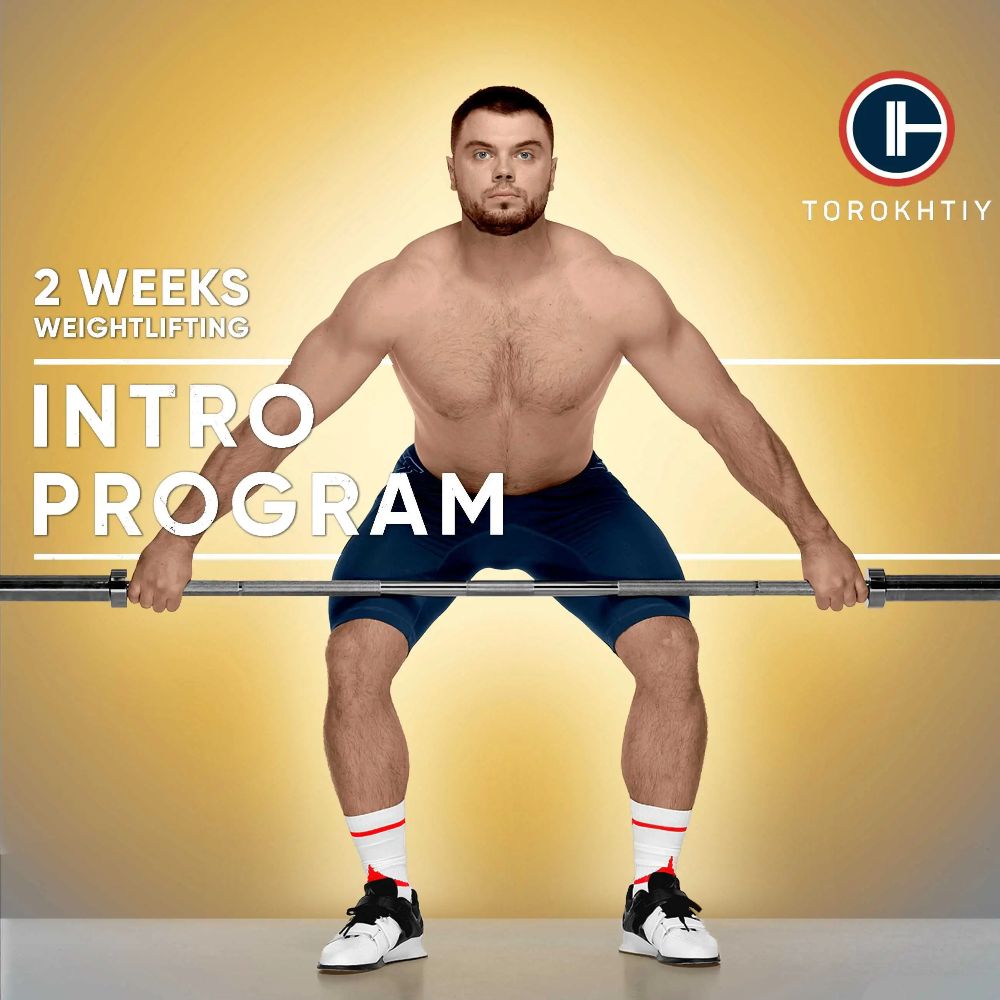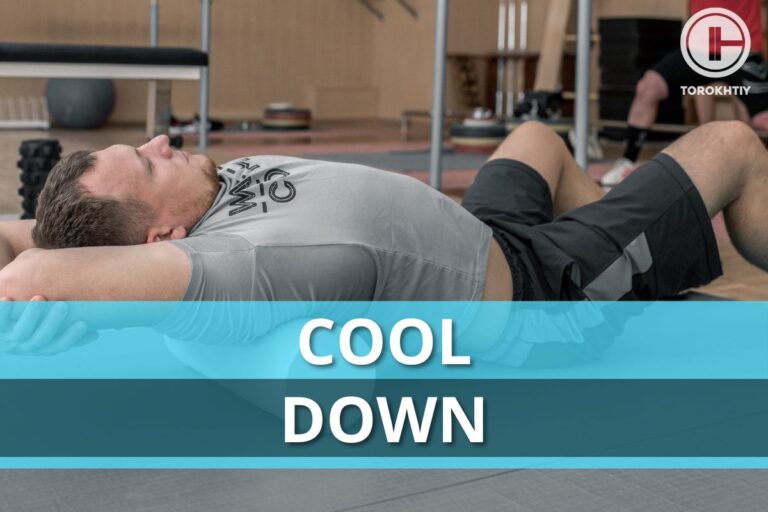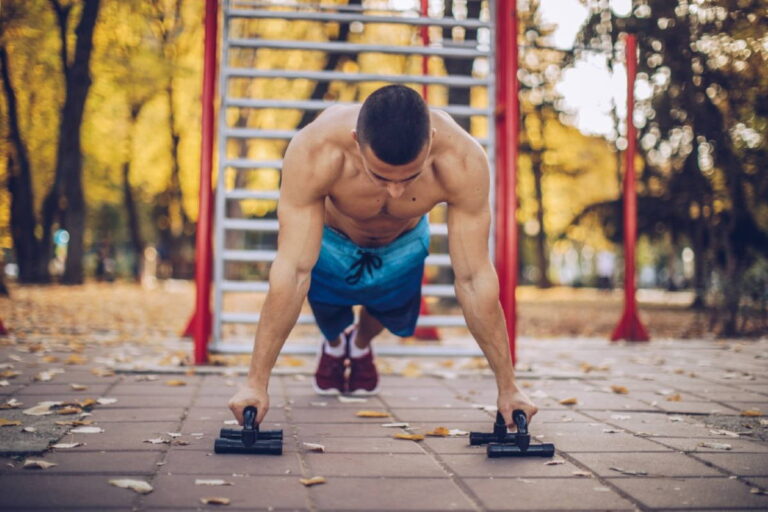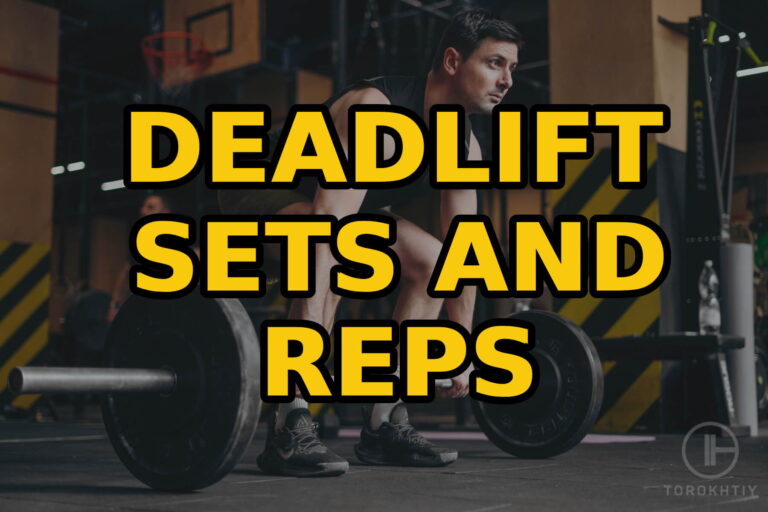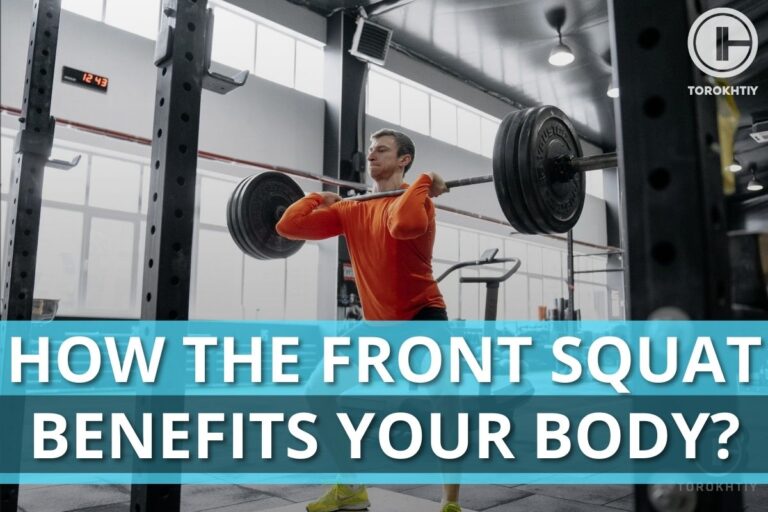4 Benefits Of Weightlifting For Seniors + 8 Simple Exercises
Weightlifting for seniors is gaining traction as a form of active physical therapy. Resistance-based exercises have a proven record of preventing common issues that occur with age, such as muscle and bone loss, cognitive decline, and general lack of physical activity in daily life.
In this article, we’re talking extensively about strength training for seniors – why it’s important, how to start, which exercises to prioritize, and how to ensure your safety while doing it. Don’t worry if you don’t have experience – the guide is completely beginner-friendly and meant for those who just started exercising or are about to hit the gym in the near future.
Don’t worry if you’re not an expert- this is a beginner-friendly guide for folk who might just be getting started with exercise or plan on hitting the gym in the near future.
Weightlifting for seniors is becoming a more common practice in their physical therapy. Weight training for seniors is often prescribed as a proven way to battle common problems that come with aging, such as muscle and bone loss and cognitive decline.

Weightlifting At 50+: Is It Possible?
Plenty of seasoned athletes hit the gym and weightlifting well into their 50s and 60s with no issue – just look at Arnold Schwarzenegger or Chuck Norris. However, what if you haven’t had a physically active lifestyle before?
Weightlifting even between the ages of 60-80 has been proven to be a safe and well-tolerated form of exercise, even among untrained seniors. Moreover, it is helpful against many physical issues that occur with aging, especially muscle and bone loss. But is weight training for seniors safe?
Regardless of your age, the most important step before engaging in any form of exercise is a physical checkup. If you’re given the approval by your doctor or physical therapist, don’t be afraid to indulge in weightlifting. Just remember to follow your routine checkups and visit the doctor in case something feels out of the ordinary after exercise.
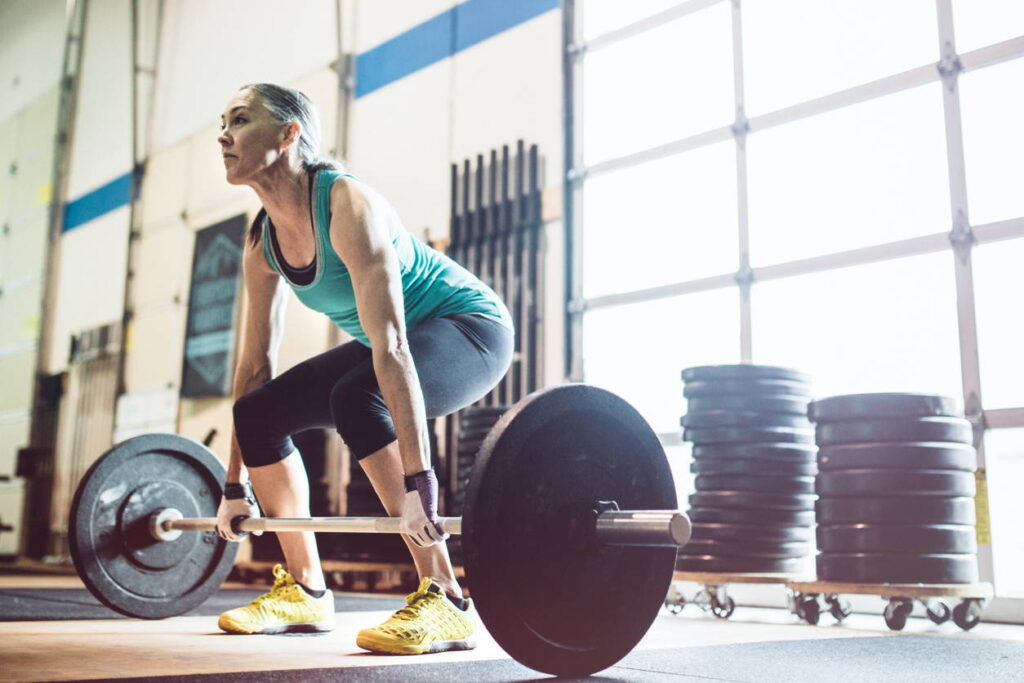
4 Benefits Of Weightlifting For Older People
We briefly touched upon how research shows resistance training helps with common aging issues. Now let’s expand on that point. Here are the main benefits of weightlifting for seniors with relevant data to back them up:
1. Retaining Muscle And Strength
Losing our strength and muscle mass is a common issue that occurs with aging. The reasons are plentiful, from our bodies producing fewer hormones and proteins later in life, to generally more sedentary and inactive lifestyles. We also don’t need a study or physical check-up to confirm it to us, most of us can simply feel it.
Strength training for seniors not only helps us increase muscle mass and retain strength in later life, it crucially helps retain basic motor function.
2. Strengthening Bones
Losing bone mass is another common issue that affects us with aging. This not only results in more frequent issues such as fractures, but it makes them more difficult to heal. Meanwhile, weight training does in fact strengthen our bones, and studies have shown initial improvements visible within just 12 weeks.
3. Cardiovascular Improvement
Although it is generally true that traditional cardio exercises like walking, running, and cycling are better for cardiovascular improvement – hence the name cardio exercise – resistance training is no slouch. A study following adults over the course of a decade showed that those who engaged in just one hour per week of resistance training had reduced their likelihood of contracting common cardiovascular diseases.
4. Cognitive Betterment
Exercise has become increasingly recommended as a method of dealing with common mental health issues, including battling depression, anxiety, and distress, among others. Recently, new data has come out that not only cements this claim but suggests that it may be more effective than medication, especially long-term.
Furthermore, weightlifting has been shown to increase the production of Brain-Derived Neurotrophic Factor (BDNF), which is a protein vital to the growth and survival of neurons in our brains. BDNF is especially important for learning and memory, which are commonly affected in older adults with diseases like dementia and Alzheimer’s.
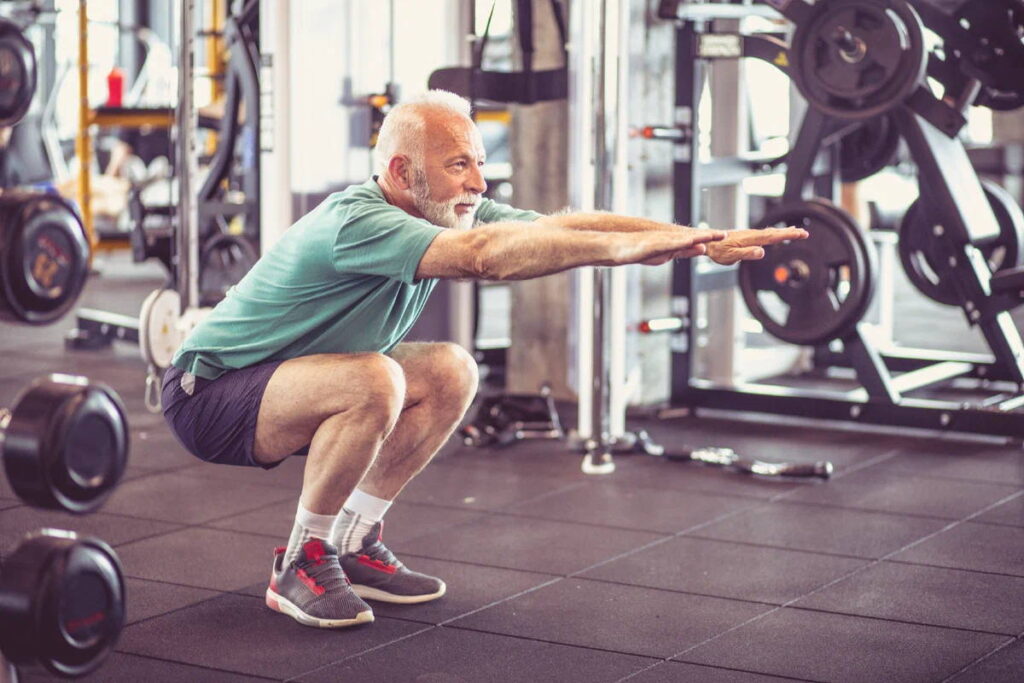
What Is The Best Way To Start Weight Training For Older People After 50
No matter your experience level, you shouldn’t be demotivated to exercise regardless of your age. Wanting to train is all that matters. If you don’t have extensive knowledge of physical training before but would like to start training now, here are some good guidelines to follow:
1. Perform A Health Checkup
First things first, go by your doctor’s office to get a general physical checkup and ask for recommendations on physical exercise. This may seem like an obvious tip to some, but a surprising number of people don’t do it. It isn’t necessarily age-related either, it’s just good practice.
Any coach worth their salt will tell you to do this before you start. Warning labels with this message are printed in visible areas on all exercise machines. Some gyms won’t even accept your membership without submitting one.
2. Follow An Exercise Plan
Training with a purpose is important for everyone, but it’s especially necessary for seniors. Simply put, older adults may not have the stamina and vigor to freestyle their exercise and must use their time and strength efficiently. This is why it’s important to follow an exercise plan set by a professional. The best person, in this case, is someone who can do a physical assessment for us, such as a personal trainer or physical therapist with expertise in helping seniors. There are also plenty of free and paid exercise plans on the Internet, but a generally good rule to follow is:
- Train with resistance 2-3 times per week
- Focus on 3-4 exercises per session at most, looking to target different muscles every session
- Do 3-4 sets of 6-12 reps depending on your comfort and weight used
3. Use Little Or Not Weight
Performing weightlifting exercises does not strictly mean lifting lots of weight. For inexperienced athletes and especially seniors, whose bodies are naturally more fragile, starting with little or no weight until observable progress has been made is always a good tip.
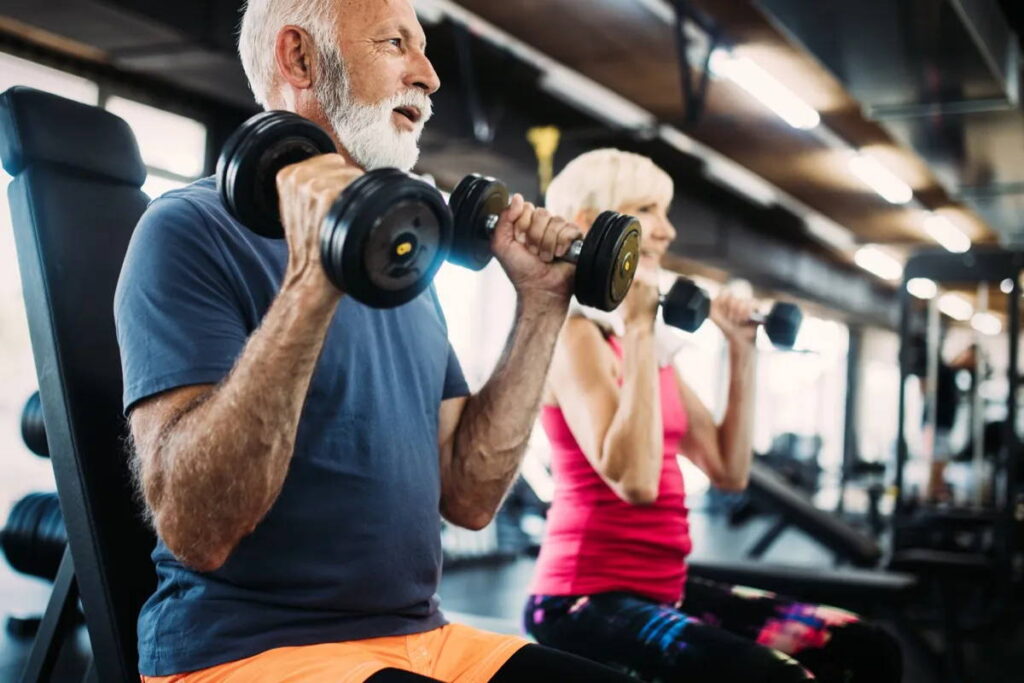
The Best Types Of Strength Training For Older People
It’s not a shame to admit we’re not as strong as we were when we were younger, but it also doesn’t mean we should give up on strength altogether. The following exercise methods are safe and efficient for strength training for senior women and men:
1. Bodyweight Exercising
Arguably the most recommended method of beginner weight training for senior women and men is bodyweight exercises. What this means is performing common exercises without added resistance from other sources – just our own weight.
This method of working out is convenient and safe for the elderly even when training alone, since it uses the weight our body is accustomed to and there’s no extra equipment to worry about balancing, holding on to, dropping, etc. Studies observing frail elderly patients confirmed that just three months of lower-body bodyweight training improved their ambulatory functions (being able to walk freely/not bedridden)
2. Dumbbell Or Free Weight Training
If you wish to add a slight challenge to your workout and you get approved to do so by your doctor or physical therapist, free weight training for seniors is the way to go. Normally this would require you to have at least some sort of workout equipment, such as light dumbbells, kettlebells, or a barbell. If you have access to a gym then feel free to use it. If not, plenty of people work out at home using DIY solutions, such as loading a backpack, water bottle, or paint bucket.
It’s important, especially if you’re older without much training experience, to keep the weight amount low and within a range you can easily control. Both free weights and machine training proved useful for developing arm and leg muscles. Remarkably, the study also reported most people enjoyed and were motivated by free weight training over gym machines, so don’t worry about missing out on the perks of training facilities.
3. Resistance Bands
Using resistance bands is an excellent way to train your strength as a senior. Resistance bands let you safely adjust the exercise intensity. There are different levels to resistance bands, but the logic is simple – the more you stretch it, the higher the resistance you will feel. Controlling resistance is as easy as moving closer or further away.
Resistance bands are also easy on the joints since you’re not bearing any excess weight. This is especially helpful for seniors, who typically have joint issues such as different forms of arthritis. Additionally, they’re generally inexpensive and come with multiple levels in one set, making them ideal for weight training for seniors at home.
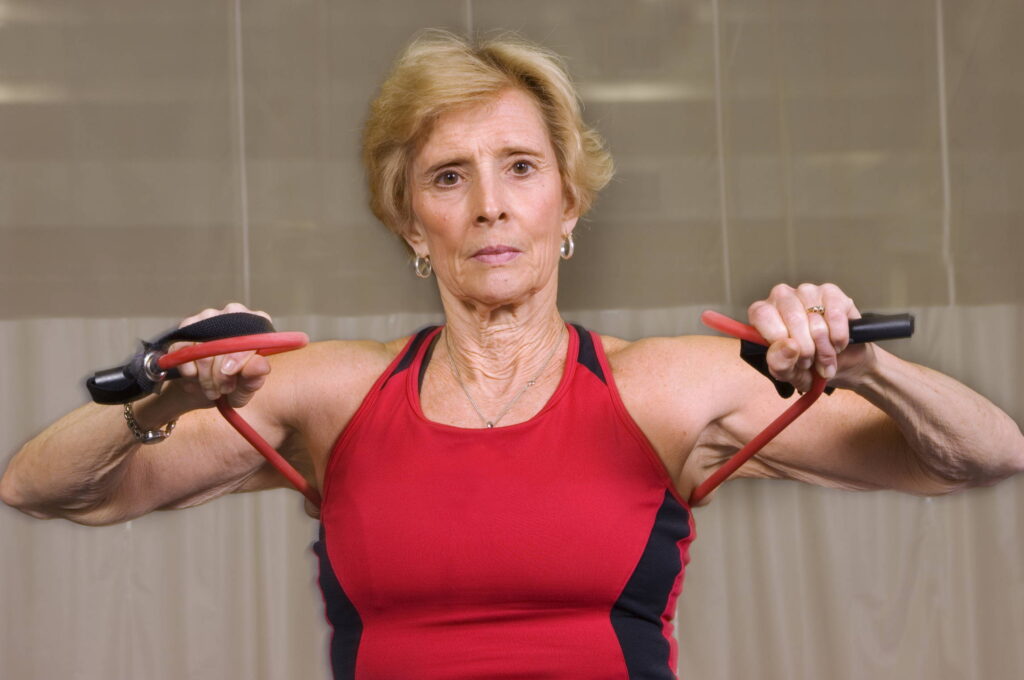
8 Simple Weight Exercises For The Elderly
You may have seen some videos of weightlifting exercises and thought: “That looks hard, better leave it for the younger crowd”. But weight training doesn’t have to be complicated or involve large weight increments. Here are some simple and light weight exercises for seniors to try:
1. Chest Press
The chest press is a basic but highly-effective strength training exercise that incorporates your chest muscles, as well as your arms and shoulders. Put simply, chest presses are done by pushing the weight away from your chest in a controlled manner until your arms are fully extended, and then slowly returning them back down to your chest.
For seniors, the safest way to do a chest press is by using a hammer machine, like those you find at the gym. It’s great because it lets you sit comfortably in the large chair that fully supports your back. Since the machine’s arms handle the weight for you, you don’t have to worry about holding it up on your own – you can easily let go of the handles without any risk if you need to.
2. Lateral Pulldowns
Lateral pulldowns, or lat pulldowns for short, are a highly popular and effective exercise for your back. The exercise primarily targets the Latissimus Dorsi muscle, hence the name. This large back muscle plays a crucial role controlling your arm movement, as well as upper body posture and stability.
At the gym, Lateral pulldowns are most often performed using the Lat Machine. Just like with the chest press machine, you don’t have to worry about balancing any weight yourself when doing lateral pulldowns. If you need to abandon the exercise, simply let go of the handlebar and step off the machine.
3. Seated Overhead Press
The overhead press simply involves pushing a weight vertically overhead from shoulder level, primarily targeting the shoulder muscles. This exercise develops muscles in our shoulders, upper back, and arms, while also improving our stability, posture, hand coordination, and explosive power. The great thing about the overhead press is that it can be fully performed while seated, making it safe for seniors with outstanding back or lower-body issues to do as well.
4. Leg Press
The Leg Press is a great exercise for developing lower body strength and explosive power. With one exercise they target various muscle groups, including quadriceps, hamstrings, gluteus, calves, adductors, and hip flexors. These muscles are essential for daily life activities like standing, walking, and even balance, which many seniors report having issues with. Leg Presses are typically done using a machine which is excellent for seniors, as it’s a completely seated exercise that’s easy on the joints
If you don’t have access to a leg press machine, you can do a similar alternative at home using resistance bands. Start by laying down on your exercise mat. Wrap the resistance band around the center of your feet and pull it towards you with your hands, until you’re laying down on your back. Bend your knees towards your chest, looking to reach at least a 90-degree angle. Then simply push your legs away from your chest until they’re fully extended.
5. Leg Curls
Leg curls are another excellent lower-body exercise for seniors. They primarily target your thighs, including the Biceps Femoris, Semitendinosus and Semimembranosus muscle groups. Our things are essential for stability in our legs, as they serve as the main connection between our hips and knees. Like the leg press, there are designated leg curl machines, which are safe and comfortable for seniors, as the exercise is done laying down.
If you don’t have access to a leg curl machine, again, you can simply use a resistance band to do it at home. First, you’re going to need an anchoring point, such as a large piece of furniture, for example. Tie the resistance band around your anchor point, turn around, and lay down on your stomach. Wrap your ankles around the resistance band by scooping it up from underneath. As you’re lying down, simply bend your lower legs back at your knees towards you. To adjust resistance, move further or closer towards the anchor point to stretch the resistance band.
6. Leg Extension
Leg extension exercises are excellent for seniors to build leg strength and stability. This exercise specifically targets the quadriceps muscles, which are crucial for daily activities like walking and standing up. Start with low weights and gradually increase as you get more comfortable. Remember to maintain proper form and avoid locking your knees. Include leg extensions in your routine to enhance overall leg strength and maintain independence as you age.
7. Biceps Curls
Arm exercises are an important part of weight training routines for seniors. Crucially, they help retain strength and ability in the upper body. Biceps curls particularly train the biceps brachii, which is an important connector between the shoulder and elbow and helps with a range of motions necessary for daily life. The muscle group helps us bend and extend our arms and plays a role in our grip strength, making it vital to functional movements like reaching for and carrying objects.
Biceps curls are fairly easy for seniors to do as all they really require is effective squeezing of the muscle, they don’t rely heavily on lifting weight. If you find them difficult to do with a bar or dumbbell, squeezing on a water bottle or stress ball is a perfectly good alternative.
8. Triceps Extension
Your triceps brachii is a large and thick muscle on the dorsal part of the arm. Its primary function is to allow for the extension of the elbow joint. This muscle is essential for daily movements such as pushing, pulling, and more detailed tasks like writing, brushing your hair, and basically any arm movement with a repeated pattern. Like with biceps curls, low amounts of weight or simply an item to grip are perfectly sufficient to train your triceps.
How To Recover From Strength Training For Seniors?
It’s crucial to take ample amounts of rest to let the muscles, joints, and connective tissue recover properly. In addition to that, make sure to get a good night’s sleep, aiming for at least 8-9 hours per night. On your days off training, feel free to engage in less demanding physical activities to keep your blood flow and energy levels up. This can include taking a walk, light stretching, yoga, and gentle aerobics.
Everyone should prioritize nutrition, but seniors should especially pay attention to consuming foods that help with brain health, including fish, broccoli, dark chocolate, and various types of nuts. Drink plenty of water, at least 6-8 full glasses per day, and remember to drink throughout the exercise to avoid dehydration. Finally, it’s important to pay attention to how you feel – if the exercise doesn’t feel normal – for example, you feel disoriented, lack strength, or similar – stop training and check with your doctor.
Is It Possible To Do Strength Training For Seniors At Home?
Definitely. In fact, many senior athletes opt for strength training from the comfort and safety of their homes. You may have to invest in some necessary equipment first, but weight training for seniors at home can be convenient and effective.
🔻FREE OLYMPIC WEIGHTLIFTING PROGRAM
Get started on your weightlifting journey with the Torokhtiy Free Olympic Weightlifting Program! Perfect for beginners, this FREE 2-week program focuses on Snatch and Clean & Jerk techniques. Suitable for all levels, it’s designed for muscle and technical preparation.
Download now for FREE!
FAQ
How Often Should A Senior Lift Weights?
The Center For Disease Control And Prevention (CDC) recommends seniors perform strength exercises at least two days per week.
Can A 70 Year Old Man Build Muscle By Lifting Weights?
While it’s generally true that we see a steep decrease in muscle mass and strength after the ages 65-70, it’s possible to build muscle well into our 70s following proper weight training routines for seniors.
Conclusion
This concludes our article on the benefits and guidelines for weightlifting for seniors. Hopefully, you’ve come off with valuable information and are now motivated to start training, regardless of your age. As you’ve seen, strength training for seniors can be life-changing, preventing or at least slowing down common issues that come with age.
We’d love to hear from you as well. Are you a novice or an experienced senior weightlifter? Also, how old were you when you first started weight training, and how old are you now if it differs?
Leave a comment letting us know and remember to follow our social media pages, where we post lots of valuable fitness content.
References:
- A longitudinal trial of weight training in the elderly // NCBI: https://pubmed.ncbi.nlm.nih.gov/8914492/
- Hormonal and Metabolic Changes of Aging and the Influence of Lifestyle Modifications // NCBI: https://www.ncbi.nlm.nih.gov/pmc/articles/PMC8020896/
- The Intensity and Effects of Strength Training in the Elderly // NCBI: https://www.ncbi.nlm.nih.gov/pmc/articles/PMC3117172/
- The Effect of Resistance Training on Bone Mineral Density in Older Adults // NCBI: https://www.ncbi.nlm.nih.gov/pmc/articles/PMC9222380/
- Associations of Resistance Exercise with Cardiovascular Disease Morbidity and Mortality // NCBI: https://www.ncbi.nlm.nih.gov/pmc/articles/PMC7385554/
- Effectiveness of physical activity interventions for improving depression, anxiety and distress // BMJ: https://bjsm.bmj.com/content/early/2023/07/11/bjsports-2022-106195
- Acute effects of strength and endurance exercise on serum BDNF and IGF-1 levels in older men // biomedcentral: https://bmcgeriatr.biomedcentral.com/articles/10.1186/s12877-020-01937-6
- Physical activity // WHO: https://www.who.int/news-room/fact-sheets/detail/physical-activity
- Effects of low-intensity bodyweight training with slow movement on motor function in frail elderly patients // biomedcentral: https://environhealthprevmed.biomedcentral.com/articles/10.1186/s12199-018-0693-4
- Effects of free weights and machine training on muscular strength in high-functioning older adults// NCBI: https://pubmed.ncbi.nlm.nih.gov/30980922/
- Arthritis Types // CDC: https://www.cdc.gov/arthritis/basics/types.html
- Latissimus Dorsi Muscle // physio-pedia: https://www.physio-pedia.com/Latissimus_Dorsi_Muscle
- Biceps Femoris // physio-pedia: https://www.physio-pedia.com/Biceps_Femoris
- Semitendinosus // physio-pedia: https://www.physio-pedia.com/Semitendinosus
- Biceps Brachii // physio-pedia: https://www.physio-pedia.com/Biceps_Brachii
- Anatomy, Shoulder and Upper Limb, Triceps Muscle // NCBI: https://www.ncbi.nlm.nih.gov/books/NBK536996/
- 11 Best Foods to Boost Your Brain and Memory // healthline: https://www.healthline.com/nutrition/11-brain-foods
- How much physical activity do older adults need? // CDC: https://www.cdc.gov/physicalactivity/basics/older_adults/index.htm
- How can strength training build healthier bodies as we age? // NIH: https://www.nia.nih.gov/news/how-can-strength-training-build-healthier-bodies-we-age
Ihor Shymechko
PRO Olympic Weightlifter, Coach
Best Results: Snatch – 208 kg,
C&J – 240 kg
Ihor has been a professional weightlifter since 1996, boasting over two decades of competition experience. His notable achievements include clinching the European Championship in 2009 and securing a silver medal in the 105kg division at the Senior World Championships in 2011. Ihor represented his country in the 2008, 2012, and 2016 Summer Olympics.
After retiring from competitive weightlifting, he transitioned to coaching, leveraging his vast experience to guide athletes who now compete on both national and international stages.
Why Trust Us?
With over 20 years in Olympic Weightlifting, our team does its best to provide the audience with ultimate support and meet the needs and requirements of advanced athletes and professional lifters, as well as people who strive to open new opportunities and develop their physical capabilities with us.
By trusting the recommendations of our certified experts in coaching, nutrition, dietology, and sports training programming, as well as scientific consultants, and physiotherapists, we provide you with thorough, well-considered, and scientifically proven content. All the information given in the articles concerning workout programming, separate exercises, and athletic performance, in general, is based on verified data. We ensure that you can rely on our professionals’ pieces of advice and recommendations that can be treated as personalized ones which will benefit you and fully meet your needs.
The product testing process is described in more detail here
Author: Ihor Shymechko
Pro Olympic Weightlifter, Coach
Best Results: Snatch – 208 kg,
C&J – 240 kg
Ihor has been a professional weightlifter since 1996, boasting over two decades of competition experience. His notable achievements include clinching the European Championship in 2009 and securing a silver medal in the 105kg division at the Senior World Championships in 2011. Ihor represented his country in the 2008, 2012, and 2016 Summer Olympics. After retiring from competitive weightlifting, he transitioned to coaching, leveraging his vast experience to guide athletes who now compete on both national and international stages.

